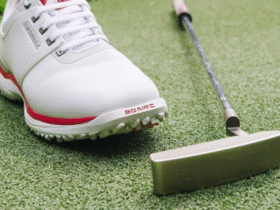Developing strong, well-defined shoulders is a cornerstone of building an impressive upper body physique. Whether you’re an athlete, a bodybuilder, or someone looking to improve their overall fitness, shoulder exercises play a vital role in enhancing your appearance, performance, and posture. One of the most effective tools for achieving this goal is the dumbbell.Shoulder Workouts with Dumbells provide the versatility and range of motion necessary to fully engage all areas of your shoulder muscles, making them an excellent choice for both beginners and seasoned lifters alike.
In this article, we will explore the best dumbbell shoulder workouts for men, covering essential exercises that can help build strength, improve stability, and develop those highly sought-after shoulder aesthetics. We’ll also dive into proper techniques and tips to ensure that you maximize your results while minimizing the risk of injury.
Why Dumbbell Shoulder Workouts?
Dumbbells are an excellent piece of equipment for shoulder workouts due to their flexibility and ability to target different parts of the shoulder muscles. Unlike barbells or machines, which often lock you into a fixed path of movement, dumbbells allow for a more natural and functional range of motion. This freedom of movement engages not just the larger muscles but also the smaller stabilizing muscles, ensuring more balanced strength development.
Additionally, dumbbell shoulder exercises are perfect for those who want to work out at home or in a gym with limited equipment. They are compact, easy to store, and adaptable to various fitness levels by simply adjusting the weight.
The Importance of Shoulder Training
Before diving into specific exercises, it’s important to understand why shoulder workouts should be a core part of your fitness routine. The shoulder joint is highly mobile, making it susceptible to injury if not properly conditioned. Strong, stable shoulders contribute to improved posture, reduced risk of injury, and increased strength in other upper body movements such as bench presses and pull-ups.
The shoulder is made up of three primary muscles, often referred to as the deltoids:
- Anterior Deltoid (Front): This muscle helps with lifting the arm forward.
- Lateral Deltoid (Side): Responsible for lifting the arm sideways and giving the shoulder its broad appearance.
- Posterior Deltoid (Rear): Important for pulling movements and shoulder stability.
For well-rounded shoulder development, your workout routine should target all three of these muscle groups.
The Best Dumbbell Shoulder Exercises
1. Dumbbell Shoulder Press
The dumbbell shoulder press is one of the most effective shoulder workouts you can incorporate into your routine. This compound movement primarily targets the anterior and lateral deltoids while also engaging the triceps and upper chest.
How to Perform:
- Sit on a bench with your back supported, holding a dumbbell in each hand at shoulder height, palms facing forward.
- Press the dumbbells upward until your arms are fully extended overhead.
- Slowly lower the dumbbells back to the starting position.
Tips:
- Avoid locking out your elbows at the top of the movement to keep tension on the shoulders.
- Keep your core engaged throughout the exercise to avoid arching your lower back.
2. Lateral Raises
Lateral raises are an isolation exercise that specifically targets the lateral (side) deltoid. This movement helps create the wide-shouldered look that many men aim for, enhancing overall upper body symmetry.
How to Perform:
- Stand with your feet shoulder-width apart, holding a dumbbell in each hand at your sides.
- With a slight bend in your elbows, raise your arms out to your sides until they reach shoulder height.
- Slowly lower the dumbbells back to your sides.
Tips:
- Focus on controlled movements, avoiding momentum to ensure the deltoids do the work.
- Keep your shoulders down and avoid shrugging to maximize tension on the lateral deltoids.
3. Front Raises
Front raises are a fantastic shoulder exercise that targets the anterior deltoid. These are particularly useful for improving your strength in pushing movements and developing the front of your shoulders.
How to Perform:
- Stand with your feet hip-width apart, holding a dumbbell in each hand in front of your thighs with your palms facing your body.
- Keeping your arms straight, raise one or both dumbbells to shoulder height.
- Lower them back down slowly.
Tips:
- Avoid using your lower back or swinging the weights. The movement should be slow and controlled, ensuring your shoulders do the work.
- Perform alternating raises (one arm at a time) for variation.
4. Arnold Press
Named after the legendary bodybuilder Arnold Schwarzenegger, the Arnold press is a variation of the traditional shoulder press that involves more rotation, hitting all three heads of the deltoid.
How to Perform:
- Sit on a bench with a dumbbell in each hand, palms facing your body and elbows bent in front of you.
- As you press the dumbbells upward, rotate your palms so they face forward by the time your arms are fully extended.
- Reverse the motion and rotate your palms back to the starting position as you lower the dumbbells.
Tips:
- Keep the movement controlled and focus on the rotational aspect to engage all parts of the shoulder.
- This exercise places significant strain on the shoulders, so start with a lighter weight to perfect your form.
5. Reverse Flyes
Reverse flyes primarily target the posterior deltoids, an often-neglected area that is crucial for shoulder balance and preventing injuries. This exercise also engages the upper back, making it a great movement for overall upper body stability.
How to Perform:
- Hold a dumbbell in each hand and bend forward at the waist with your back flat and knees slightly bent.
- Allow your arms to hang down with your palms facing each other.
- With a slight bend in your elbows, raise your arms out to your sides until they reach shoulder level.
- Slowly lower the dumbbells back to the starting position.
Tips:
- Avoid swinging the weights; keep the movement slow and controlled to engage the rear deltoids effectively.
- Squeeze your shoulder blades together at the top of the movement for maximum muscle activation.
6. Dumbbell Shrugs
While dumbbell shrugs primarily target the trapezius (traps), they are an excellent addition to your shoulder workout as they help stabilize the shoulder joint and develop the upper back.
How to Perform:
- Stand upright with your feet shoulder-width apart, holding a dumbbell in each hand at your sides.
- Shrug your shoulders upward as high as possible, bringing your shoulders toward your ears.
- Hold the contraction for a moment, then slowly lower your shoulders back down.
Tips:
- Keep your arms straight and avoid rolling your shoulders to prevent strain on the neck.
- Focus on the squeeze at the top of the movement to fully activate the traps.
7. Bent-Over Dumbbell Rows
While not strictly a shoulder exercise, bent-over dumbbell rows work the posterior deltoids and upper back, making them a great addition to any shoulder routine. They also contribute to overall shoulder stability and upper body strength.
How to Perform:
- Bend over at the waist with a dumbbell in each hand, keeping your back flat and knees slightly bent.
- Pull the dumbbells up toward your chest, keeping your elbows close to your body.
- Lower the dumbbells back down with control.
Tips:
- Keep your core tight and avoid rounding your lower back to protect your spine.
- Focus on pulling through your back and shoulders, rather than your arms.
Creating an Effective Dumbbell Shoulder Workout Routine
To get the best results from your dumbbell shoulder workouts, it’s important to structure your routine in a way that hits all three parts of the shoulder: anterior, lateral, and posterior deltoids. A balanced shoulder workout routine will not only improve aesthetics but also ensure functional strength and injury prevention.
Sample Dumbbell Shoulder Workout Routine
- Warm-Up: 5-10 minutes of light cardio (jump rope, treadmill, or cycling) followed by dynamic shoulder stretches to increase blood flow and mobility.
- Dumbbell Shoulder Press: 4 sets of 8-12 reps
- Lateral Raises: 3 sets of 12-15 reps
- Arnold Press: 3 sets of 8-10 reps
- Reverse Flyes: 3 sets of 10-12 reps
- Front Raises: 3 sets of 12-15 reps
- Dumbbell Shrugs: 3 sets of 10-12 reps
- Cool-Down: Light stretching focusing on the shoulders, upper back, and chest.
Tips for Shoulder Workout Success
- Form over weight: One of the biggest mistakes people make when doing shoulder exercises is using too much weight. It’s better to start with lighter dumbbells and perfect your form before increasing the load.
- Consistency is key: Like any muscle group, shoulders require consistent training over time to grow stronger and more defined. Incorporate shoulder workouts into your routine 1-2 times a week for the best results.
- Rest and recovery: Your shoulders, like all muscles, need time to recover after a workout. Make sure to give them at least 48 hours of rest before working them again.
Common Mistakes to Avoid During Dumbbell Shoulder Workouts
1. Using Too Much Weight
It’s tempting to lift heavy, especially when working on upper body strength. However, overloading the shoulders with too much weight can compromise your form and increase the risk of injury. Start light, especially when performing exercises like lateral raises and front raises, where form is crucial.
2. Neglecting the Posterior Deltoids
Many lifters focus too much on the anterior and lateral deltoids, forgetting that the posterior deltoids are equally important for shoulder balance and stability. Including exercises like reverse flyes and bent-over rows will ensure you have balanced shoulder development.
3. Overtraining the Shoulders
Because the shoulders are involved in many upper body movements, it’s easy to overtrain them. Be mindful of how often you’re working your shoulders and allow adequate recovery time to prevent injury and burnout.
4. Poor Shoulder Mobility
If your shoulder mobility is limited, performing exercises like the dumbbell shoulder press can become difficult and potentially harmful. Incorporate regular mobility work and stretches to maintain or improve your shoulder range of motion.
Conclusion
Dumbbell shoulder workouts are an essential component of any upper body training regimen. By targeting the deltoids from multiple angles, you can develop stronger, more defined shoulders while improving overall functional strength. Incorporating the exercises outlined in this guide, focusing on proper form, and maintaining a balanced training routine will help you achieve the shoulder development you desire.
Whether you’re working out at home or in the gym, dumbbells offer a versatile and effective way to build strength and size in your shoulders. Remember, consistency, proper technique, and adequate rest are key to unlocking your full potential. Start incorporating these dumbbell shoulder exercises into your routine today and watch your shoulders transform!















Leave a Reply